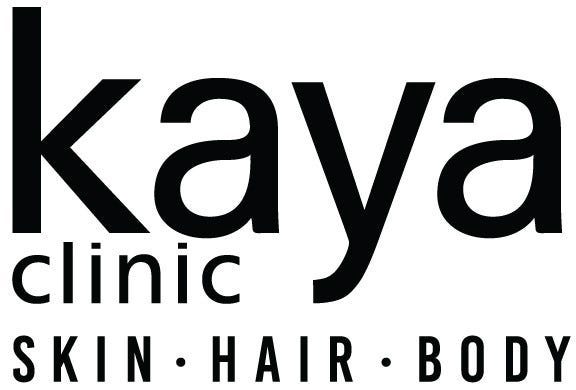Chicken Pox Scars Removal in Adults and Children

Table of Contents
- Overview
- List of 5 Home Remedies For Removing Chicken Pox Scars
- Top Over-The-Counter Treatments For Scars
- Professional Methods of Treatments For Chickenpox Scars
- How To Prevent Chickenpox Scars
- Consulting A Doctor For Chicken Pox Scars In India
- Chicken Pox Scars in Adults and Children FAQs
Overview
Chickenpox scars, though often considered a remnant of childhood, can persist into adulthood, causing emotional distress and impacting self-esteem. Understanding the causes and types of chickenpox scars is crucial for effective treatment. Scarring occurs when the body's immune response to the varicella-zoster virus, which causes chickenpox, damages the skin's tissue during the healing process.
Common types of chickenpox scars include atrophic scars, characterized by sunken areas of the skin, and hypertrophic scars, which are raised and often reddish in color. Addressing chickenpox scars in both adults and children requires a comprehensive approach, combining home remedies, over-the-counter treatments, and professional interventions to achieve optimal results.
By exploring various treatment options and preventive measures, individuals can effectively manage chickenpox scars and restore confidence in their skin's appearance.
List of 5 Home Remedies For Removing Chicken Pox Scars
Natural Oils: Natural oils such as coconut oil, rosehip oil, and lavender oil have been cherished for their healing properties for centuries. These oils are rich in vitamins, antioxidants, and fatty acids that promote skin regeneration and reduce the appearance of scars. Coconut oil, in particular, contains lauric acid, which possesses antibacterial and anti-inflammatory properties, making it an ideal choice for scar treatment. Rosehip oil is known for its high concentration of vitamin A, which aids in skin repair and regeneration, while lavender oil soothes the skin and promotes healing.
Aloe Vera Gel: Aloe vera gel is a time-tested remedy for various skin ailments, including chicken pox scars. Its cooling and moisturizing properties help soothe inflamed skin and promote the regeneration of healthy tissue. Aloe vera gel contains compounds such as polysaccharides, which stimulate cell growth and repair damaged skin. Regular application of aloe vera gel to chicken pox scars can help fade discoloration and improve skin texture over time.
Lemon Juice: Lemon juice is a natural exfoliant and skin brightener, making it effective for reducing the appearance of chicken pox scars. The citric acid present in lemon juice helps to remove dead skin cells and promote the growth of new, healthy skin tissue. Additionally, lemon juice is rich in vitamin C, an antioxidant that helps to lighten dark spots and even out skin tone. Regular application of freshly squeezed lemon juice to chicken pox scars can help diminish their appearance and improve overall skin texture.
Honey: Honey is revered for its moisturizing and antibacterial properties, making it a valuable ingredient in scar treatment. Honey helps to hydrate the skin, reduce inflammation, and promote wound healing. Its natural antibacterial properties help prevent infections and protect the skin from further damage. Additionally, honey contains antioxidants that help repair damaged skin cells and promote collagen production, leading to smoother, healthier-looking skin. Applying honey to chicken pox scars can help reduce their visibility and improve overall skin health.
Vitamin E: Vitamin E is a powerful antioxidant that plays a crucial role in skin repair and regeneration. It helps protect the skin from oxidative damage caused by free radicals and promotes the healing of scars. Vitamin E oil can be applied topically to chicken pox scars to moisturize the skin, reduce inflammation, and improve overall skin texture. Regular use of vitamin E oil can help fade scars and promote the growth of new, healthy skin tissue, leading to smoother and more even-looking skin.
Top Over-The-Counter Treatments For Scars
Overview of OTC Scar Removal Products:
Over-the-counter (OTC) scar removal products offer individuals a convenient and accessible solution for addressing chicken pox scars. These products are readily available at pharmacies, supermarkets, and online retailers, making them easily accessible to those seeking scar treatment options.
OTC scar removal products come in various forms, including creams, gels, serums, and patches, each formulated with specific ingredients designed to target scar tissue and promote skin regeneration. While OTC products may not be as potent as prescription treatments, they can still yield noticeable improvements in scar appearance when used consistently over time.
Additionally, OTC scar removal products are generally more affordable and carry fewer risks compared to professional treatments, making them a popular choice for individuals seeking cost-effective solutions for scar management.
Key Ingredients to Look for in Scar Treatment Products:
When selecting OTC scar removal products, it's essential to look for key ingredients that have been clinically proven to effectively reduce the appearance of scars. Some common ingredients found in scar treatment products include:
Silicone: Silicone is widely regarded as one of the most effective ingredients for scar treatment. It works by creating a protective barrier over the scar, trapping in moisture and promoting collagen production, which helps soften and flatten the scar over time.
Vitamin E: Vitamin E is a powerful antioxidant that helps protect the skin from free radical damage and promotes healing. It moisturizes the skin and may help reduce inflammation and redness associated with scars.
Hydroquinone: Hydroquinone is a skin-lightening agent commonly used to fade dark scars and hyperpigmentation. It works by inhibiting the production of melanin, the pigment responsible for darkening the skin.
Alpha Hydroxy Acids (AHAs): AHAs, such as glycolic acid and lactic acid, are exfoliating agents that help remove dead skin cells, revealing fresh, new skin underneath. They can help improve the texture and appearance of scars by promoting cell turnover and collagen production.
Allium Cepa (Onion Extract): Onion extract has anti-inflammatory and antibacterial properties and has been shown to help reduce the appearance of scars. It may also help flatten raised scars and improve overall skin texture.
When choosing an OTC scar removal product, it's essential to read the label carefully and look for products containing these key ingredients for optimal results. Additionally, individuals with sensitive skin or allergies should perform a patch test before using any new product to avoid potential adverse reactions.
Professional Methods of Treatments For Chickenpox Scars
Laser Resurfacing:
Laser resurfacing is a popular and effective treatment option for chickenpox scars, particularly for those with deep or widespread scarring. This procedure involves the use of laser technology to remove the outer layer of damaged skin, stimulating collagen production and promoting the growth of new, healthier skin cells. There are two main types of laser resurfacing: ablative and non-ablative. Ablative lasers, such as carbon dioxide (CO2) and erbium lasers, remove the entire top layer of skin, while non-ablative lasers penetrate the skin without removing any tissue. Both types of lasers can improve the appearance of scars by smoothing out rough texture, reducing discoloration, and promoting skin tightening.
Chemical Peeling Treatment:
Chemical peels are another option for treating chickenpox scars, particularly for those with mild to moderate scarring. During a chemical peel treatment, a chemical solution is applied to the skin, causing it to exfoliate and peel off. This process stimulates cell turnover and collagen production, resulting in smoother, more even-toned skin. Chemical peels can help reduce the appearance of scars by improving skin texture, reducing hyperpigmentation, and promoting the growth of new, healthy skin cells. There are different types of chemical peels available, ranging from superficial peels that target the outermost layer of skin to deeper peels that penetrate the deeper layers of the skin. The type of peel recommended will depend on the severity of the scarring and the individual's skin type and concerns.
Subcision Surgery:
Subcision is a surgical procedure used to treat depressed or pitted scars caused by chickenpox. During the procedure, a small needle or blade is inserted into the skin to break up the fibrous bands of tissue that are pulling the scar downward. This allows the depressed area to lift and fill in with new collagen, resulting in a smoother skin surface. Subcision is often combined with other treatments, such as laser therapy or dermal fillers, to optimize results. While subcision is generally safe and well-tolerated, there may be some temporary bruising, swelling, or discomfort following the procedure.
Microneedling Radiofrequency:
Microneedling radiofrequency (RF) is a minimally invasive procedure that uses tiny needles to create controlled micro-injuries in the skin, followed by the application of radiofrequency energy. This combination stimulates collagen production and remodels the skin's structure, resulting in smoother, firmer skin with improved texture and tone. Microneedling RF can be an effective treatment for chickenpox scars, particularly for those with shallow to moderate scarring. The procedure is relatively quick and requires little downtime, with most patients able to resume their normal activities within a few days. Multiple sessions may be needed to achieve optimal results, depending on the severity of the scarring and the individual's treatment goals.
Surgical Procedures:
In some cases, particularly for severe or extensive scarring, surgical intervention may be necessary to achieve the desired results. Surgical options for treating chickenpox scars may include punch excision, punch elevation, or skin grafting. Punch excision involves removing individual scars with a small, cookie-cutter-like tool, followed by suturing the skin closed. Punch elevation is similar but involves lifting the scar to bring it level with the surrounding skin before suturing. Skin grafting may be recommended for large or deep scars, where healthy skin is taken from another part of the body and transplanted to the scarred area. These surgical procedures are typically performed under local anesthesia and may require some downtime for recovery.
These professional methods of treatment offer individuals a range of options for addressing chickenpox scars, allowing them to choose the approach that best suits their needs, preferences, and budget. It's essential to consult with a qualified dermatologist or plastic surgeon to determine the most appropriate treatment plan based on individual factors such as the severity of scarring, skin type, and overall health.
How To Prevent Chickenpox Scars
Tips for Minimizing Scarring During Chicken Pox Recovery:
Avoid Scratching: One of the most crucial steps in preventing chickenpox scars is to avoid scratching the blisters. Scratching can damage the skin further, increase the risk of infection, and lead to more severe scarring. Keep nails short and consider wearing gloves or covering the affected areas to prevent scratching, especially in children who may find it challenging to resist the urge to scratch.
Keep Skin Clean and Moisturized: Cleanse the skin gently with a mild, fragrance-free soap and lukewarm water to remove any crusts or debris from the blisters. Avoid harsh scrubbing or rubbing, as this can irritate the skin and exacerbate scarring. After cleansing, apply a gentle moisturizer to keep the skin hydrated and prevent dryness, which can impede the healing process and increase the risk of scarring.
Use Calming Topicals: Apply soothing topical treatments, such as calamine lotion or oatmeal baths, to relieve itching and inflammation associated with chickenpox. These products can help reduce discomfort and minimize the likelihood of scratching, thereby reducing the risk of scarring. Avoid applying harsh or abrasive substances to the skin, as these can irritate and damage delicate skin tissue.
Avoid Sun Exposure: Protect the skin from sun exposure during the chickenpox recovery period, as UV radiation can exacerbate inflammation and increase the risk of hyperpigmentation and scarring. Keep affected areas covered with loose clothing or bandages and use a broad-spectrum sunscreen with a minimum SPF of 30 if exposure cannot be avoided. Sunscreen should be applied liberally and reapplied every two hours, especially if spending extended periods outdoors.
Seek Medical Advice: Consult a healthcare professional, such as a dermatologist or pediatrician, for guidance on managing chickenpox symptoms and preventing scarring. They can provide personalized recommendations based on the severity of the condition, individual skin type, and any underlying health concerns. In some cases, they may prescribe antiviral medications or topical treatments to alleviate symptoms and promote faster healing, reducing the risk of scarring.
Importance of Proper Wound Care and Management:
Proper wound care and management are essential for minimizing the risk of scarring and promoting optimal healing during chickenpox recovery. Here are some key principles to keep in mind:
Keep Blisters Intact: Avoid popping or picking at chickenpox blisters, as this can introduce bacteria into the wound, leading to infection and more severe scarring. Allow the blisters to heal naturally and avoid applying adhesive bandages or dressings that may stick to the skin and cause trauma upon removal.
Keep Wounds Clean: Cleanse the affected areas gently with mild soap and water to remove any debris, crusts, or discharge. Pat the skin dry with a soft towel, taking care not to rub or irritate the skin. Avoid using alcohol-based products or harsh cleansers, as these can dry out the skin and impair the healing process.
Apply Topical Treatments: Use topical treatments recommended by healthcare professionals to soothe itching, reduce inflammation, and promote healing. Calamine lotion, colloidal oatmeal baths, and antihistamine creams can help alleviate discomfort and minimize the urge to scratch, reducing the risk of scarring.
Protect Against Infection: Keep the skin clean and dry to prevent bacterial or fungal infections, which can delay healing and increase the risk of scarring. Avoid sharing personal items such as towels, clothing, or bedding, and encourage good hand hygiene to minimize the spread of infection.
Monitor Healing Progress: Keep a close eye on the healing progress of chickenpox lesions and seek medical attention if there are signs of infection, such as increased redness, swelling, warmth, or pus discharge. Healthcare professionals can provide additional guidance and interventions to support healing and prevent scarring.
Finding a Qualified Dermatologist or Specialist:
Exclusive Expertise: At Kaya Clinic, we understand the importance of finding a qualified dermatologist or specialist for chickenpox scar treatment. Our team comprises board-certified dermatologists and experienced specialists who possess exclusive expertise in scar management and dermatological care.
Advanced Training: Our healthcare providers undergo extensive training and continuous education to stay updated on the latest advancements in scar treatment and dermatological techniques. They are equipped with the knowledge and skills to assess and address a wide range of scar types and complexities effectively.
Client-Centric Approach: We prioritize client satisfaction and strive to deliver personalized care tailored to individual needs and preferences. Our healthcare providers take the time to listen to your concerns, understand your treatment goals, and develop customized treatment plans that align with your expectations.
Proven Track Record: With years of experience and a proven track record of successful outcomes, Kaya Clinic has earned a reputation as a trusted provider of scar treatment solutions in India. Our satisfied clients testify to the quality of our services and the transformative impact of our treatments on their skin.
State-of-the-Art Facilities: Kaya Clinic boasts state-of-the-art facilities equipped with advanced technologies and innovative treatment modalities for scar management. From laser therapy and chemical peels to microneedling and surgical procedures, we offer a comprehensive range of treatments to address chickenpox scars effectively.
Importance of Seeking Professional Advice for Scar Treatment:
Comprehensive Evaluation: At Kaya Clinic, we conduct comprehensive evaluations of chickenpox scars to assess their severity, texture, and underlying skin condition. Our healthcare providers employ advanced diagnostic tools and techniques to develop a thorough understanding of your unique concerns and treatment needs.
Customized Treatment Plans: We believe in providing customized treatment plans tailored to your specific scar type, skin type, and lifestyle factors. Our dermatologists and specialists leverage their expertise to recommend the most suitable combination of treatments, ensuring optimal results while prioritizing your comfort and safety.
Cutting-Edge Technologies: With access to cutting-edge technologies and advanced treatment modalities, Kaya Clinic offers innovative solutions for scar management. Whether you require laser resurfacing, chemical peeling, or microneedling radiofrequency, we utilize state-of-the-art techniques to enhance the appearance of chickenpox scars and restore skin health.
Ongoing Support and Follow-Up: Our commitment to client care extends beyond the initial consultation and treatment phase. We provide ongoing support and follow-up care to monitor your progress, address any concerns or questions you may have, and ensure that you achieve long-lasting results from your scar treatment.
Safe and Effective Solutions: By seeking professional advice for chickenpox scar treatment at Kaya Clinic, you can rest assured that you are in safe hands. Our healthcare providers prioritize your safety and well-being, employing evidence-based practices and clinically proven treatments to minimize risks and maximize the effectiveness of your scar treatment journey.
Chicken Pox Scars in Adults and Children FAQs
What causes chickenpox scars?
Chickenpox scars result from the healing process of chickenpox lesions, which can leave behind pockmarks or depressions on the skin. Scratching or picking at the lesions during the acute phase of the infection can increase the likelihood of scarring.
Are chickenpox scars permanent?
Chickenpox scars can be permanent, although their appearance may fade over time. The severity of the scars depends on various factors, including the individual's skin type, the depth of the lesions, and the effectiveness of scar management strategies.
Can chickenpox scars be prevented?
While it may not be possible to prevent chickenpox scars entirely, minimizing scratching during the infection and adopting proper wound care techniques can help reduce the risk of scarring. Prompt treatment of active lesions and avoiding trauma to the skin can also aid in scar prevention.
What home remedies can help fade chickenpox scars?
Home remedies such as applying vitamin E oil, aloe vera gel, or silicone gel sheets to the affected areas may help fade chickenpox scars over time. However, the effectiveness of these remedies can vary, and it's essential to consult a healthcare professional for personalized advice.
What over-the-counter treatments are available for chickenpox scars?
Over-the-counter treatments for chickenpox scars may include topical creams or gels containing ingredients such as vitamin C, retinol, or hydroxy acids. These products aim to improve skin texture and promote collagen production to reduce the appearance of scars.
Are there professional treatments available for chickenpox scars?
Yes, several professional treatments are available for chickenpox scars, including laser therapy, chemical peels, microneedling, and surgical procedures. These treatments are performed by dermatologists or skincare specialists and aim to improve the appearance of scars.
How effective are professional treatments for chickenpox scars?
The effectiveness of professional treatments for chickenpox scars can vary depending on factors such as scar severity, skin type, and individual response to treatment. In some cases, multiple sessions may be required to achieve optimal results.
Is it safe to undergo professional treatments for chickenpox scars?
When performed by qualified healthcare professionals using appropriate techniques and equipment, professional treatments for chickenpox scars are generally safe. However, it's essential to discuss any potential risks or side effects with your healthcare provider before undergoing treatment.
Can chickenpox scars affect self-confidence and emotional well-being?
Yes, chickenpox scars can have a significant impact on self-confidence and emotional well-being, especially if they are prominent or widespread. Seeking treatment for scars can not only improve their appearance but also boost self-esteem and quality of life.
At what age can chickenpox scars be treated?
Chickenpox scars can be treated at any age, although the optimal timing for treatment may vary depending on factors such as scar maturity and skin condition. Consultation with a dermatologist or skincare specialist can help determine the most appropriate treatment approach for individual cases.




